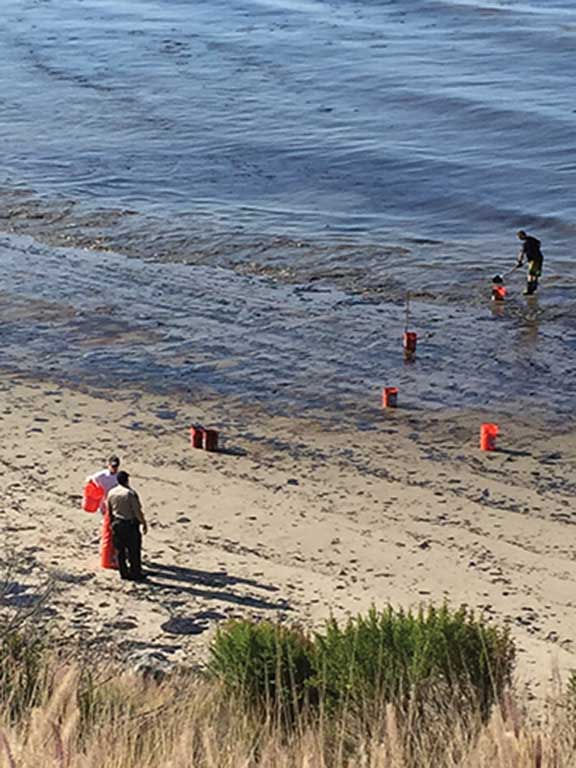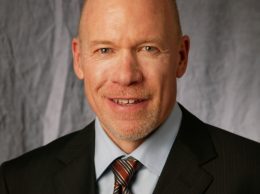Refugio oil spill raises important questions for South Coast
IN THIS ARTICLE
- Columns Topic
- Henry Dubroff Author
By Henry Dubroff Friday, May 22nd, 2015

A California Highway Patrol officer warns volunteers who showed up May 20 to clean up oil near Refugio State Beach from a 21,000-gallon pipeline spill to leave the area because it was too hazardous.
Photo by Debra Giles
The estimated 105,000-gallon oil spill that will ruin Memorial Day for thousands of visitors to Refugio State Beach in Santa Barbara County is a reminder of how much environmental issues have become economic stories.
Santa Barbara County is so heavily dependent on hotel-related taxes that it literally can’t afford the kind of environmental disaster that would derail its summer tourist season. The city of Goleta, the population center closest to the May 19 leak in a large pipeline operated by Plains All American Pipeline, derived 34 percent of its revenue from so-called TOT taxes last year.
As UC Santa Barbara Economic Forecast Director Peter Rupert pointed out to me in a recent chat, the bulk of job growth since the recession has been in the sort of low-wage retail and services jobs that come along with a tourism boom. Those jobs are extremely vulnerable to an environmental disaster.
As the Business Times went to press on May 20, the oil spill was confined to a relatively narrow area along the coast and a cleanup was well under way. Federal officials classified it as a “medium” spill and were hopeful that recovery would be speedy — no dead animals had been spotted onshore.
But as the birthplace of the environmental movement, the South Coast is going to attract national and international media attention with any oil spill. And that raises important issues going forward.
• How will state, local and federal officials hold Plains accountable for the damage caused and the cleanup? California and Santa Barbara County strengthened penalties after a series of incidents at Greka facilities in North Santa Barbara County years ago. The May 19 spill will be a test of how well those new rules work.
• Will there be broader impacts on fishing? State and federal officials have spent years trying to manage and rebuild the Santa Barbara Channel’s badly depleted fishing grounds, partly in recognition of the fact that locally sourced fish and commercial fleets are the bedrock of the tourism economy.
• What will happen to future oil-and-gas projects in the region? Both Venoco and Aera Energy are in the early stages of proposing new production ventures in Santa Barbara County. Even though the Refugio spill was related to transportation of oil and not production, this is going to be a highly volatile issue for local politicians at least in the near term.
The bottom line is that the economic balance of the region has been shifting away from oil-and-gas production and toward tourism, particularly tourism that is eco-friendly. The major stakeholders in spills and cleanups are not just environmentalists and politicians — innkeepers, restaurant owners, winemakers, servers and hotel workers all have jobs at risk.
The Refugio spill and cleanup will teach us a lot about how far and how fast that shift has taken us.
• Reach Editor Dubroff at [email protected].
Related Articles
 Wednesday, November 9th, 2022
Wednesday, November 9th, 2022









